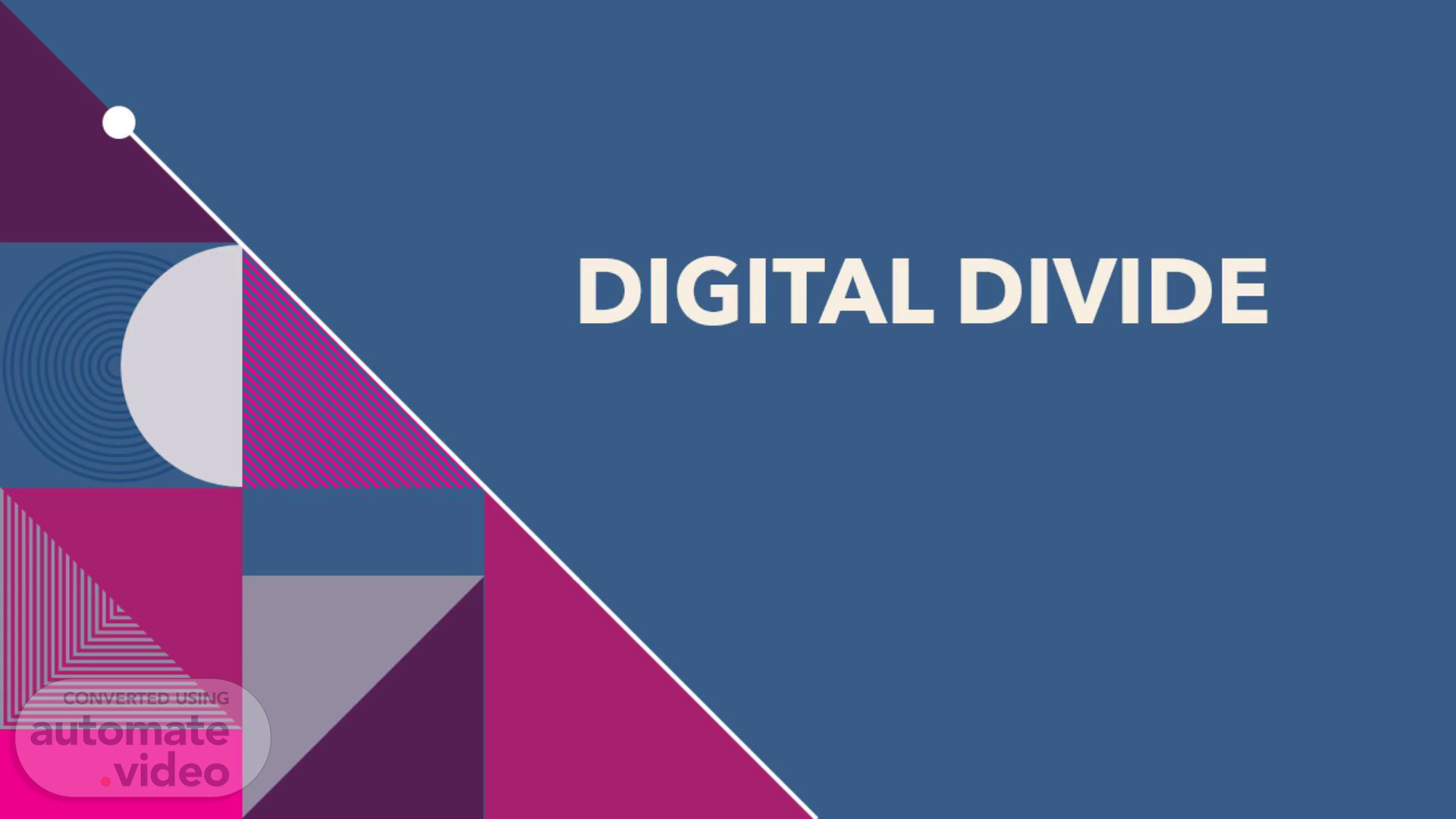Scene 1 (0s)
[Audio] Digital Divide. Digital Divide.
Scene 2 (5s)
[Audio] TABLE OF CONTENTS Introduction Reason For Digital Divide Condition Of Digital Divide in Nepal Solutions Of Digital Divide.
Scene 3 (15s)
[Audio] introduction The digital divide is a term used to refer to the gap between people who have access to the internet and those that do not. It can also refer to the skills people have - the divide between peoples who are using technology to access and analyze information and those who are not..
Scene 4 (34s)
[Audio] Reason For Digital Divide Socioeconomic status Educational level Geographical location Age Physical disabilities.
Scene 5 (44s)
[Audio] Socio-economic status Socio-economic status refers to the social standing or class of an individual or group, often measured as a combination of income, education, and occupation. Higher-income individuals and families can afford the latest devices and high-speed data plans. They are also more likely to live in areas with superior digital infrastructure. Whereas lower-income people often struggle with affordability issues and consequently have limited access to the digital world..
Scene 6 (1m 16s)
[Audio] Educational level Those with higher education levels typically demonstrate better digital literacy skills. . They naturally have a greater ability to use digital technology effectively due to more exposure to these tools during their education..
Scene 7 (1m 33s)
[Audio] Geographical LOCATION Infrastructure is another core determinant of the Digital Divide. By infrastructure, we mean both the physical infrastructure (broadband, Wi-Fi signals, etc.) and soft infrastructure (availability of technical support, training programmed etc.)..
Scene 8 (1m 52s)
[Audio] CONDITION OF DIGITAL DIVIDE IN NEPAL We all know Nepal is developing countries so there is limited access to internet in urban areas. There is a noticeable disparity in internet access between urban and rural areas. Urban centers generally have better access to digital technologies and higher internet penetration rates compared to rural villages. The Nepalese government has recognized the importance of bridging the digital divide and has taken steps to improve digital infrastructure and promote digital literacy. Initiatives such as the National Broadband Policy aim to expand internet connectivity across the country, particularly in rural areas..
Scene 9 (2m 34s)
[Audio] Socioeconomic factors play a significant role in exacerbating the digital divide in Nepal. Individuals from lower-income households often lack access to digital devices such as smartphones, laptops, and computers, as well as the financial means to afford internet connectivity. Limited digital literacy is another challenge contributing to the digital divide. Many Nepalese, particularly in rural areas and among older generations, may lack the skills and knowledge necessary to effectively use digital technologies and navigate online platforms..
Scene 10 (3m 12s)
[Audio] Solutions of digital divide Infrastructure Development: Expand and improve telecommunications infrastructure, including broadband networks and mobile connectivity, especially in underserved rural and remote areas. Governments and private sector stakeholders can invest in building the necessary infrastructure to ensure equitable access to digital technologies. Affordable Access: Reduce the cost barriers associated with internet access and digital devices. This can be achieved through subsidies, incentives for internet service providers, and initiatives to promote the affordability of smartphones, tablets, and computers. Education and Training: Integrate digital literacy and ICT (Information and Communication Technology) skills training into formal education curricula at all levels. Additionally, provide vocational training and continuing education programs focused on digital skills development for adults..
Scene 11 (4m 13s)
[Audio] Solutions of digital divide Public Access Facilities: Establish public access facilities such as community centers, libraries, equipped with computers and internet connectivity. These facilities serve as hubs for digital access, training, and community engagement, particularly in areas with limited household access to digital devices..
Scene 12 (4m 37s)
[Audio] ANY Queries. ANY Queries. A cartoon character leaning on a question mark.
Scene 13 (4m 44s)
[Audio] THANK YOU. THANK YOU. A group of people with arms raised Description automatically generated.
